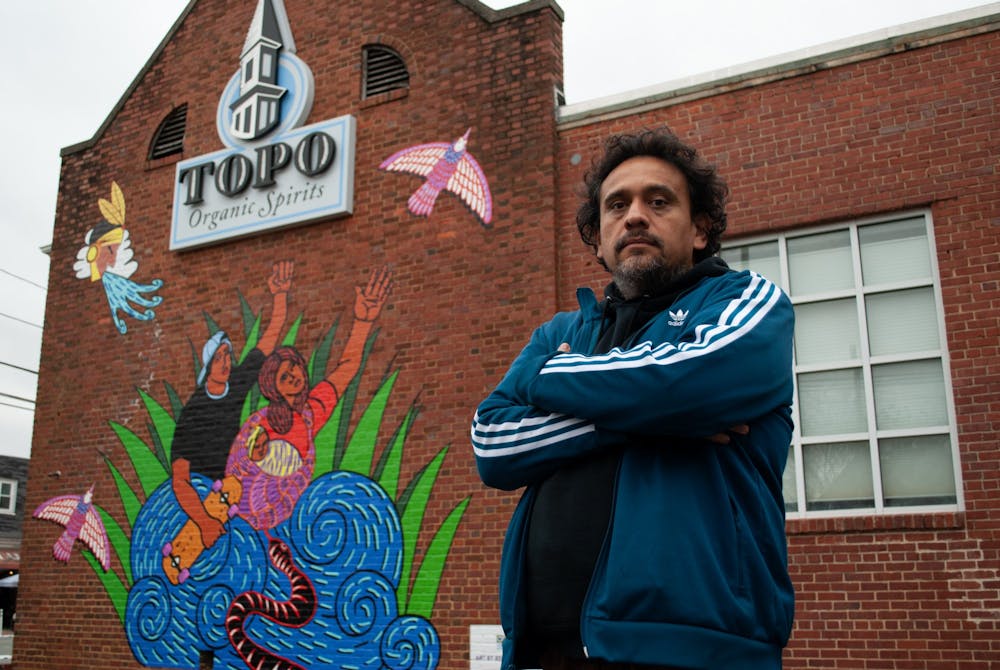Downtown Chapel Hill welcomed the installation of four new vibrant pieces of vinyl art last week, featuring work by local artists Renzo Ortega, Luis Franco, Antonio Alanís and Kiara Sanders.
Melissa Bartoletta, Chapel Hill Community Arts & Culture marketing and communications coordinator, said once the pandemic hit, the division was looking for ways to reallocate money and brighten downtown spaces while highlighting the art of people of color in the community. They put out a call in the fall of 2020 for pieces that would reflect inclusion, diversity and community resilience to display on the walls and windows of downtown businesses.
Artist Antonio Alanís created a vinyl piece called “We, Too, Sing America,” a homage to Langston Hughes and his poem “I, Too,” which for Alanís embodies the idea of a metaphorical table and who gets a seat. Alanís said this conception of opportunity is well suited to an existence in the United States.
“I chose this specifically because the African American community along with the Hispanic Latinx community has been fighting for equality for centuries,” Alanís said. “I was thinking really closely about what it means to belong in the United States and to have a seat and opportunity. I chose it to really pay my respects for the African American community.”
Community, for Alanis, means fighting for equality and for social justice.
“What I do in my work is think about ways that we as community members can engage in conversations about equality and social justice within a diverse community,” Alanís said.
As an artist and an educator, he is critical of performative activism and instead encourages crucial conversations about real change. Additionally, Alanís used the opportunity to acknowledge the essential workers that worked tirelessly during the pandemic.
“It was just an encompassing work to talk about the meaning of humanity, the meaning of living and surviving through some of the hardest times ever,” Alanís said.
For his vinyl piece, Alanís illustrated individuals from diverse backgrounds in hopes that his piece will give those who don’t normally see themselves positively represented in public artwork the opportunity to see art featuring people who look like them.




